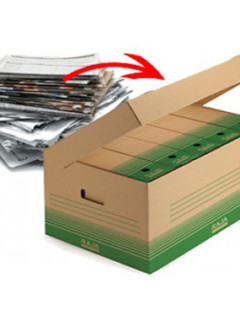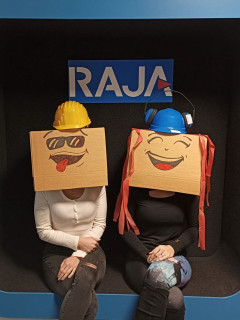The right box size plays a key role in any logistics process – affecting transport safety, packaging speed, transport costs and environmental footprint. At a time of rising prices for shipping services and increasing pressure on sustainability, optimizing packaging sizes is one of the easiest ways to save money while being more environmentally responsible.
Why is box size more important than it seems?
- Lower transport costs
Increasingly, carriers are charging for shipments based on ‘ dimensional weight’ – i.e. the bigger the box, the higher the price, regardless of the actual weight. An unnecessarily large box can mean unnecessary overcharges. - Smaller ecological footprint
Smaller packaging means less material, less filler and lower transport emissions. And the less air that is shipped, the better for the planet and your wallet. - Better protection of goods
Packing too loosely can cause goods to shift during transit and cause subsequent damage. A properly fitting box with adequate padding minimises the risk of claims.
Principles for choosing the right box size
- Measure the product as accurately as possible, ideally including the packaging (e.g. bottle and label and cap).
- Allow a margin of 2-5 cm for protective padding, especially for fragile or valuable items.
- If you are sending different types of goods, consider different box sizes – unification can be convenient but not always effective.
- Use folding or height-adjustable boxes if you need flexibility.
Getting to grips with boxes: the basics of the FEFCO system
The FEFCO system is the international standard for marking the shapes and designs of cardboard boxes. It enables packaging to be clearly named without the need for complex descriptions.
The most commonly used types:
- FEFCO 0201 – a classic flap box with two flaps at the top and bottom, ideal for standard packaging.
- FEFCO 0427 – box with reinforced corners, popular in e-shops.
- FEFCO 0713 – telescopic (retractable) box, ideal for products with different heights.
📦 RAJA offers hundreds of different FEFCO box types, plus many sizes – the selection can be perfectly tailored to your specific product range.
Which boxes to choose for different product types?
- Textiles and accessories
Softer products are not susceptible to damage – a lightweight flap box (e.g. 0201) or corrugated cardboard envelopes will suffice. - Books, documents, printed matter
Ideal are flat boxes with height adjustment (e.g. FEFCO 0427 or telescopic FEFCO 0713) that adapt to the contents. - Fragile goods (e.g. glass, ceramics)
Choose a sturdier box and add a quality filler (paper, foam profiles, bubble wrap). A sufficient gap between the goods and the box wall is important. - Heavy goods, spare parts, technology
Five-layer or three-layer cardboard boxes ensure load-bearing capacity and stability during transport.
How to choose the ideal box size?
- Based on the actual dimensions and nature of the goods.
- Minimize extra space, but don’t forget the protective padding.
- Choose boxes that make storage, packing and shipping easier.
- Let the experts advise you – at RAJA we can recommend the ideal solution for you.
📌 S maller boxes = less waste, lower costs, fewer emissions – but only if they protect your product.
Choosing the ideal box size is always a question of compromise between product protection, cost and sustainability. The right packaging can significantly reduce packaging and shipping costs while ensuring customer satisfaction through intact goods. At RAJA, we are happy to help you select and customize packaging to suit your product range and logistical needs.














